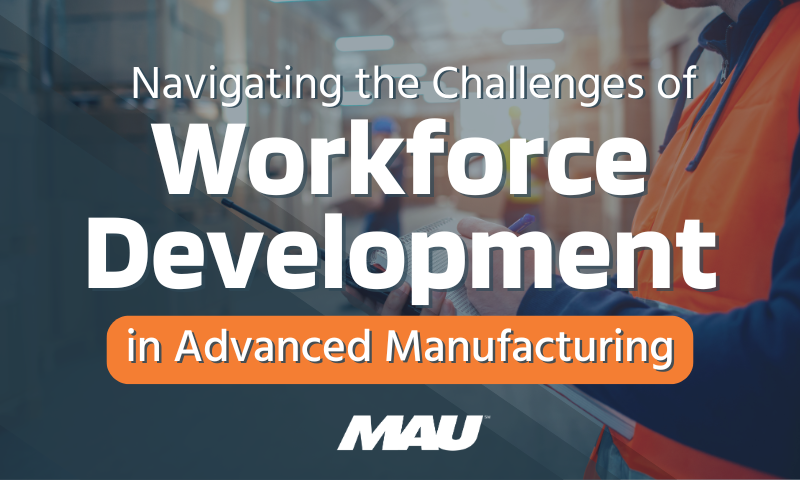For many reasons, globalization can be a wonderful thing: lower costs, the spread of technology and innovation, the melding of cultures, boosting developing nations, and global cooperation to name a few. However, globalization can quickly become exploitive and costly as the global markets shift and grow.
In the late 1970s, America’s most prominent public companies began offshoring manufacturing in order to maximize profits for their shareholders. By offshoring to countries with fewer labor and environmental regulations, the U.S. was able to generate enough profit to mitigate the enormous cost of shipping finished goods and even raw materials internationally. According to a report published in 2014 by a group of professors from the Massachusetts Institute of Technology (MIT), the US lost between 2 and 2.4 million jobs between 1999 and 2011 due to the increase in imports from China.
Today, it’s becoming clear that offshoring is no longer the magic bullet solution it once was, and could potentially be a detriment in the current economic landscape. With offshoring comes unpredictability, instability, and vulnerability, as proven by the COVID-19 pandemic, global supply chain shortages, and rising international tensions.
It’s time to start exploring another solution: reshoring and investing in our domestic supply chains.
Trailblazers Leading the Charge
There are a number of major manufacturers who have begun rolling out initiatives to restore and strengthen the US supply chain. These trailblazers are leading the charge and building a solid foundation for the nation’s supply chain to stand on as more and more manufacturers make the switch.
- General Motors (GM), one of the most important automotive companies in the country, announced a series of investments focused on “building a strong, sustainable, scalable and US-focused supply chain,” according to the vice president of global purchasing and production chains of GM, Shilpan Amin.
- Toyota North America announced that it has begun construction of a battery plant in North Carolina that would begin production in 2025 and employ more than 1,800 people.
- Intel, the microprocessor manufacturer, has been making big announcements showing its interest in increasing microprocessor production in the US. On January 21, it announced that it will build what could be the largest microchip factory in the world in the town of New Albany, Ohio. The announcement follows the construction of two new plants in Arizona which would have an investment of close to $20,000 million. According to the president of Intel, Pat Gelsinger, the investments, which could reach a total of $ 100,000 million, are made in order to “have greater resilience in the supply chain”
What’s Causing the Shift?
The past few years have forced business owners, leaders, and workers to reflect on the existing systems that govern how and where we do business. We tend to assume that the way things have always been done continues to be the best way, when in reality that’s almost never the case. All of these challenges have provided an opportunity to question the status quo and determine what the domestic supply chain truly needs to not only survive but thrive.
Many retailers and manufacturers continue to struggle with supply and demand, and it seems that nearly every industry is impacted. From the automotive sector to children’s toys, computers, clothing, and food, most business leaders seem to be facing the same shortages caused by distant suppliers.
There are a number of factors influencing the ongoing shortages, as well as the shift away from international suppliers:
- The fact that the delta between U.S. and offshoring China labor rates has narrowed
- Overseas regulations have increased
- The complexities of post-sale customer support persist, forcing businesses to look homeward for help
- Quality, rework, and warranty
- Freight costs
- Supply chain disruption, natural disaster risk, and political instability
- Tariffs
- Green Considerations
- Government incentives
Simply put, offshoring has lost much of its appeal in the modern economic landscape. Newer automation has mitigated the labor cost differential that made outsourcing so attractive initially, and the stability of the political landscape has deteriorated, making relationships unstable and volatile.
So, Why is Reshoring so Crucial?
According to the annual study conducted by the Reshoring Initiative, which advocates promoting reshoring in the US, in 2020 companies announced that 160,649 jobs would return to the country or would be created as a result of direct foreign investment. And in 2021, reshoring increased by 36%, which would be reflected in the creation of 220,000 jobs.
This movement toward reshoring, particularly during the pandemic potentially prevented more extensive damage to the US economy.
Beyond big-picture crisis avoidance, reshoring has a number of more quantifiable benefits, like shorter lead times, improved product quality, and minimized regulatory compliance risks. Many companies also benefit from a more skilled workforce and an improved customer experience due to increased agility when responsinding to fluctuating demand.
When products are manufactured across the world, businesses must spend valuable time and energy tailoring processes to each individual market. In contrast, domestic production facilitates just-in-time manufacturing, which optimizes workflow to more quickly produce products for less capital investment.
Leaders can make the same choices that left them vulnerable during the pandemic or choose innovation, and bold strokes, to forge a new path forward.
For more ways to boost the supply chain and run a future-proofed business, check out our “Keys to Building a Resilient Supply Chain” Chain whitepaper.




